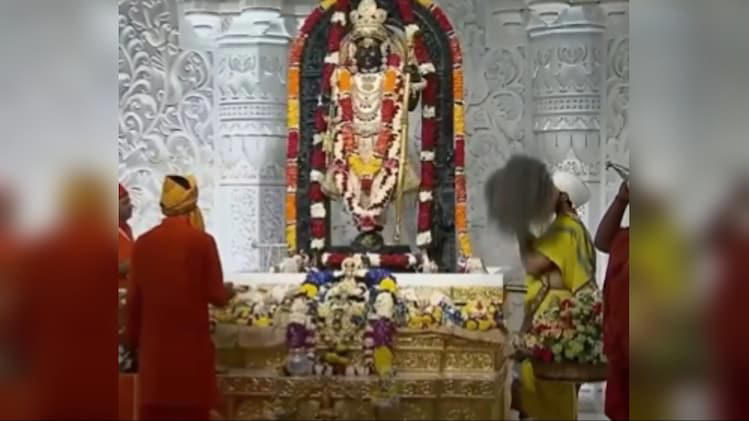The sacred thread of Ayodhya’s Ram Lalla intertwines with the resplendent threads of Assam’s silk on the auspicious occasion of Akshaya Tritiya. As devotees across the nation celebrate this propitious day, marked by its significance in Hindu mythology and tradition, the convergence of spirituality and craftsmanship finds expression in the adornment of traditional Assamese silk garments with images of Lord Ram.
Akshaya Tritiya holds profound significance in Hindu culture, believed to be an auspicious day for new beginnings, prosperity, and spiritual blessings. Devotees throng temples, perform rituals, and engage in acts of charity, seeking divine blessings and auspiciousness for their endeavors. It is against this backdrop of fervent devotion and cultural celebration that the tradition of adorning Assam’s silk with images of Lord Ram gains prominence.
The tradition of embellishing silk garments with religious motifs is deeply rooted in Assam’s rich cultural tapestry, where craftsmanship and spirituality converge to create exquisite works of art. The intricate designs and vibrant hues of Assamese silk, renowned for their timeless elegance and craftsmanship, serve as a canvas for depicting scenes from Hindu mythology and religious iconography.
On Akshaya Tritiya, artisans across Assam showcase their skill and creativity by incorporating images of Lord Ram, revered as the embodiment of righteousness and divine grace, onto silk garments. These meticulously crafted creations serve not only as sartorial adornments but also as symbols of devotion and reverence, imbued with spiritual significance and cultural heritage.
The adornment of Assam’s silk with images of Lord Ram resonates deeply with devotees, offering them an opportunity to express their faith and devotion through the medium of attire. As they don these garments, they carry with them a sense of spiritual connection and cultural pride, honoring their traditions and invoking blessings for prosperity and well-being.
Moreover, the convergence of Ayodhya’s Ram Lalla with Assam’s silk reflects the interconnectedness of India’s diverse cultural and religious traditions, transcending regional boundaries and fostering a sense of unity in diversity. It serves as a reminder of the shared heritage that binds communities together, celebrating the richness of India’s cultural mosaic and the spirit of inclusivity that defines its ethos.
The celebration of Akshaya Tritiya also serves as an occasion for promoting the indigenous crafts and traditions of Assam, providing a platform for artisans to showcase their talent and preserve age-old techniques passed down through generations. In a world increasingly dominated by mass production and globalization, the art of silk weaving in Assam stands as a testament to the resilience of traditional craftsmanship and the enduring appeal of handmade textiles.
Furthermore, the tradition of adorning Assam’s silk with religious motifs contributes to the socio-economic empowerment of local communities, providing livelihood opportunities for artisans and bolstering the state’s economy. It highlights the importance of preserving and promoting traditional crafts as a means of sustainable development and cultural preservation, ensuring that future generations inherit a legacy of artistic excellence and cultural pride.
As devotees across Assam and beyond celebrate Akshaya Tritiya, the sight of Lord Ram adorning the exquisite silk garments of Assam serves as a poignant reminder of the enduring power of faith, tradition, and craftsmanship. It is a celebration of spiritual auspiciousness and cultural heritage, where the sacred and the secular converge in a colorful tapestry of devotion and creativity.
In the timeless tradition of Akshaya Tritiya, as the sun shines its eternal blessings upon the earth, may the threads of Assam’s silk woven with images of Lord Ram serve as a symbol of prosperity, auspiciousness, and divine grace for all.

